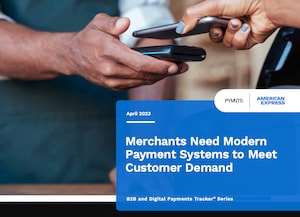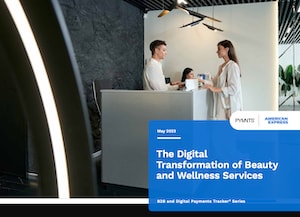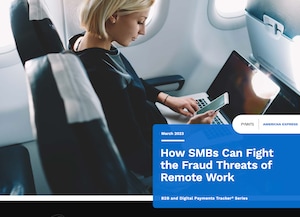February 28, 2024
How to Leverage Multigenerational Entrepreneurial Spirit
A shift is happening in the C-suite. Recently, Baby Boomer executives have made way for Gen X and Millennial successors. Still, even they’re finding it challenging to engage and retain Gen Z employees – the newest entrants into corporate realms. Leaders who are winning this struggle to maintain harmony and business growth in an evolving, multigenerational workforce are those who recognize, support and reward the entrepreneurial underpinnings of the Gen Z mindset.
So far, Gen Z has proved to think differently about the workplace from their predecessors. Young adults make up more and more of the global workforce every year, and for many from Gen Z, a job can be just a means to an end. It may not be worth giving up their personal pleasures just to satisfy the boss. They may be willing and eager to work, but only in balanced and defined parameters. When they’re off the clock, they’re off the clock.
Understandably, this “my personal needs come first” outlook can frustrate and mystify some senior leaders who were raised to prioritize work; the concept of saying “no” to overtime might seem unfathomable to some. I’ve spoken with many executives and directors who want to connect with their Gen Z talent but haven’t figured out how. However, Gen Z’s thinking isn’t as odd as it may seem; they've inherited a precedent of employee-company misalignment and employer distrust, not created it.
The truth is young workers can and want to perform at high levels, and leaders need to lean into this. Gen Z see themselves as capable and entrepreneurial and won’t wait 30 years to snag a dream job. Many young adults may already have at least one side hustle, and “hustle” is something they know they can do.
Veteran leaders are missing out on a big secret: Gen Z is an entire generation of people who think like entrepreneurs but increasingly want the security of working at an established organization, so there is tremendous opportunity to build an organization full of “intrapreneurs,” or internal entrepreneurs. And it’s an opportunity you can’t afford to miss. If leaders provide support (such as intrapreneurship training), they can help foster more engagement, trust and retention – and move their companies toward more growth and innovation.
Unleashing the Entrepreneurial Energy of Gen Z Employees
Today’s leaders may not need to worry that Gen Z is unwilling to play their part. If leaders are willing to build better talent pools by creating the structure and space for intrapreneurship within their organization, Gen Z is poised to impress. Here are three ways to help leverage the entrepreneurial spirit to drive engagement, growth and agency.
1. Use purpose as a catalyst.
The topic of purpose, an organization’s “why,” can often arise when discussing Gen Z, and for good reason: young adults don’t want to quit work or get by easily, but they are looking for an employer whose values align with their own. Identifying and defining your purpose can be a big step toward that alignment.
If you don’t have a purpose statement, or if it’s outdated, you should start by creating one or updating the one you have. Whether it’s a company or team purpose, your purpose statement should tell employees why they come to work, why your company exists, and how they support a greater vision. A clear and defined purpose can attract talent with similar values and help younger employees connect and engage with the bigger picture.
2. Unleash potential with intrapreneurial opportunities.
There’s a lot of growing buzz around the concept of intrapreneurship, and for good reason: the practice of intrapreneurship can support business growth, innovation, and engagement. It can encourage entrepreneurial actions and behaviors in large, established organizations to help accelerate the path to the organization’s goals. For example, customer support teams that operate like intrapreneurs might encourage employees at all levels to share, test, and even deploy creative solutions within certain parameters. Intrapreneurship can offer opportunities for everyone to innovate, regardless of title.
As a leader or manager, your role is to help ensure your employees have a simple process that teaches them how to validate their ideas, influence key stakeholders, and build simple action plans that help them chart a path forward while they learn and adjust along the way. To do this, try to provide resources for your team, like frameworks for identifying customer needs and action plan templates, as well as stories of other entrepreneurs in your organization. These simple actions can help build foundational leadership skills on your team and help build engagement by satisfying the entrepreneurial fire burning within your teams. And, when you recognize their abilities and support their development in this way, you can find a creative and motivated workforce that will invest back into your company.
"A new generation in the mix can feel chaotic, but it's also an opportunity for innovation and growth."
3. Signal trust through autonomy.
Gen Z workers don’t want to be treated like children. They’re often well aware of the veteran experience around them, but short tenure doesn’t mean they aren’t competent employees who deserve to be treated as peers.
One way to show you value them and build engagement is to provide some autonomy. Intrapreneurship supports small, smart risks without the need for a stamp of approval at every step. And because intrapreneurs are working toward existing business goals, you can feel more comfortable providing this freedom, which in turn can lead to more creativity and engagement.
You don’t need to upend your entire organization to engage every generation. Try to start with micro-cultural updates that support intrapreneurship and a more robust, future-proof company fabric can grow between them. A new generation in the mix can feel chaotic, but it’s also an opportunity for innovation and growth. You’re not going rogue by accommodating Gen Z; you’re building a valuable talent pipeline while accelerating progress toward your business goals.
Photo: Getty Images









